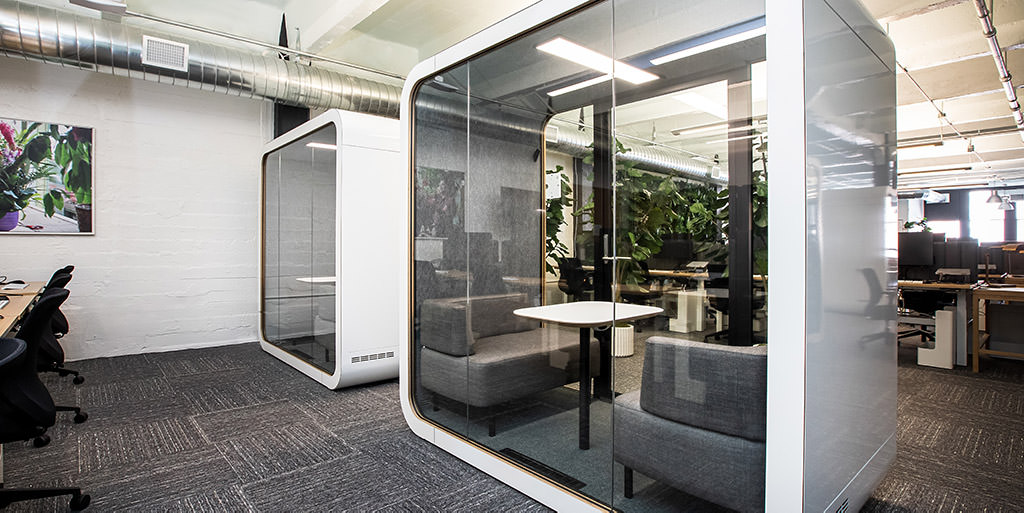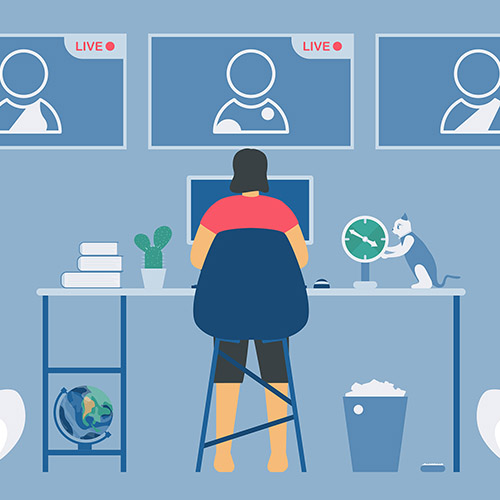The pandemic has uncovered a deep desire in us to have the best of both worlds when it comes to work. In our three-part series, we investigate what is needed across policy and culture, the built environment, and technological demands to make hybrid work work for people and organizations. Embedded across each theme are underlying questions around human psychology and behavioral change. What is going to make people comfortable and excited about hybrid work?
In our second installment we look at the built environment.
The Built Environment Will Change
People aren’t going to be eagerly going back into crowded, open office settings or jumping back onto public transportation. Along with new hybrid work policies, our physical environments will need to be updated to provide a safe and psychologically comfortable working environment. People will want to maintain social distancing, hygiene, and flexibility around those environments. Although it seems easy to throw technology at the problem, there’s a deep psychological need that companies and cities need to address to make people feel safe and comfortable again.
- People are going to want to maintain personal space…for a while: For dense office buildings, policy changes such as rotating attendance or rolling entry times will help manage crowds. Offices may want to invest in modular office designs to create segmented spaces to protect employees. The open office model that was popular in our industry can still work if adequate safety measures are in place to keep employees spaced out. Steelcase’s “Post-COVID Workspaces and Office Spaces” provides furniture lines that provide highly modular work solutions that give employees space and flexibility.
- Create spaces that optimize hybrid work: There may be a greater need for more collaborative work spaces in a mixed work environment. Optimizing “call rooms” that accommodate hybrid attendance will provide privacy to employees and prevent distractions to those in the office. Google has been exploring ways to build remote-inclusive meeting spaces, such as their “campfire rooms,” which puts remote employees at a more level playing field during hybrid meetings by magnifying remote employees and placing them at eye level in the meeting.
- Touchless Hygiene Technology: We’ve seen a push towards touchless technology to automate systems and improve hygiene in addition to antibacterial/microbial materials. Although appealing and seemingly effective, these could be costly to implement and will require a good bit of behavioral change to be effective. Also, these solutions often fail. For example, think of the many times you’ve attempted to use an automatic sink or paper dispenser that didn’t work!
- Integration of Technology with Office Spaces: We predict there will be a greater integration of technology into our lives (for better or worse). We anticipate a surge in mobile applications to help us with staggering office times and shared spaces such as conference rooms, lunch pick-ups, and commute times. Some companies are taking it a step further and using sensors to detect the proximity of employees to each other. The challenge with all of these is that adoption will be inconsistent, which then reduces the efficacy of these solutions.
- Growth of Satellite Offices and Outdoor Offices: This has potential in high growth, expensive, dense cities such as our own Boston, NYC, and San Francisco. As more people move away from the city to find affordable housing, the appeal of satellite offices is worth exploring for companies who want to support in-person work but still limit commuting time. Some companies can also explore utilizing outdoor spaces when the climate can permit outdoor working.
Modifying the built environment is often a costly endeavor and can take a while. Many proposed environmental changes are also dependent on people’s willingness to modify their behaviors in the office. However, companies who can invest in making their offices safe and comfortable for their employees while also providing flexible working policies will reap the benefits of employee retention and improved collaboration.
Special thanks to Steve Benoit, Gail Black Smith, and Janus Cole for their help with researching and editing this article.




